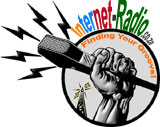While the bulk of podcast listening—70%, by some estimates—occurs on the Apple podcasting app, up to now, Apple provided only the number of downloads and no additional numbers. But podcasters have finally received the word from Apple they’ve long been waiting for: The tech giant will dole out at least some hard data on podcast listening.
Publishers and producers have long been in the dark on critical usage metrics, including time spent listening, when users started and stopped, when they skip, when they drop out, and if they complete a show. Such intel is essential for both producers to assess their performance and also for their advertisers, who want to know if the audience is hearing their ads.
“It may look obscure, but this is the biggest thing to happen to the podcast business since ‘Serial’ first went nuclear,” tweeted Gimlet Media president Matthew Lieber.
Some podcast platforms do provide more granular detail and several publishers, including NPR, are working on their own data analytics tool. However, with Apple’s dominant position in the market, industry executives have long cited the company’s reluctance to share even basic listening metrics as a constraining force to grow both audience and revenue.
“Arguably, one of the biggest things holding the monetization of podcasts back has been the lack of usable metrics,” says Jacobs Media’s digital specialist Seth Resler. “Podcasters know how many downloads their episodes generate, but beyond that, data has been sparse.”
In 2016, Apple served up over 10 billion podcast episode downloads and streaming plays across its platforms (iOS, macOS, and tvOS). That’s up from 8 billion the year before, and they’re on track for 20% growth in 2017, Resler notes.
With such a large audience, Apple is sitting on a trove of data. And while podcasters resoundingly applauded Apple’s decision to release some data, the information will fall short of what podcasters would really like to see. At its annual Worldwide Developers Conference in San Jose last week, Apple said it will begin to release general audience information, rather than any detailed usage from individual users or even demographic groups. Apple’s data will be aggregated and anonymous. More specific data would allow publishers and their ad partners to better target advertising to demographic, behavioral and even geographic specs, all of which are hallmarks of digital advertising. But Apple has shown reluctance to get involved with too much advertising and also closely guards its users’ privacy, industry observers have noted.
While the information might be limited, it will still be a revelation for many podcasters, notes Steven Goldstein, CEO for podcast consulting firm Amplifi Media.
“Apple’s new analytics are likely to be a wake-up call for many producers and possibly a reset in the advertising community, answering questions about whether ads are heard or skipped, when shows are stopped and a much needed resolution for many podcasters as to how long their podcast should be,” Goldstein said in a blog post.
Also as part of a presentation on podcasting at its conference, Apple revealed updates to its podcasting app that will give podcasters several new options for displaying their programs. Podcasters can now group shows by seasons and select the order the episodes are displayed. They can also indicate if a program is a full episode, a clip or bonus content.











